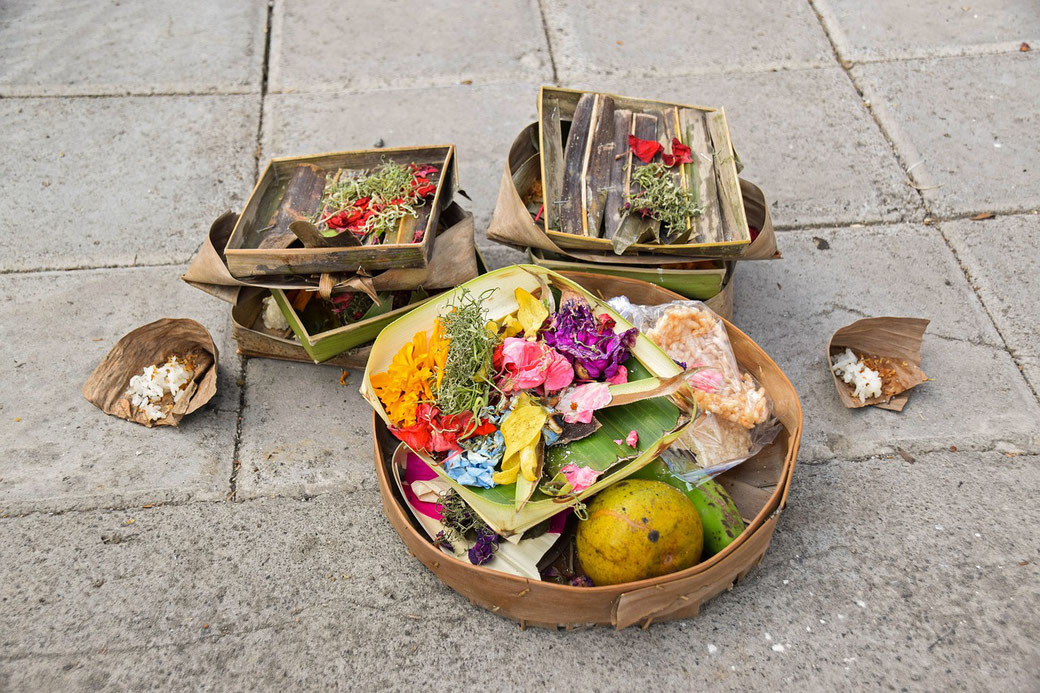daily offerings & rituals
One of the most distinctive and visible aspects of Balinese culture is the tradition of creating and offering "canang sari," which are small, woven baskets made from coconut leaves or palm leaves. These offerings are an integral part of Balinese Hinduism and are seen throughout the island in various locations, such as homes, temples, streets, and even on the beach.
Canang Sari:
Canang sari is a type of daily offering that holds symbolic significance in Balinese Hinduism. The term "canang" refers to the basket, and "sari" means essence or essence of nature. These offerings are made multiple times a day, and their purpose is to show gratitude to the gods and maintain harmony between the physical and spiritual worlds. Canang sari are typically prepared by the women of the household, who carefully arrange various elements within the basket.
The components of a canang sari usually include:
Betel leaves: These leaves are considered sacred and symbolize the three Hindu gods: Brahma, Vishnu, and Shiva.
Flowers: Flowers represent the beauty and impermanence of life. Each color and type of flower may have specific symbolism. For instance, red flowers might symbolize Brahma, white for Vishnu, and black or blue for Shiva.
Rice: Rice grains represent prosperity and abundance. They are often placed on top of the arrangement.
Scented sticks or incense: Incense is believed to carry prayers and intentions to the gods while purifying the environment.
Candies, snacks, or other food items: These offerings represent sustenance and are meant to nourish the spirits.
Coins or money: Symbolic of wealth and an offering of material resources to the gods.
The arrangement of these components can vary, and the exact elements might change based on the purpose of the offering or personal preference. After the canang sari is assembled, it is usually placed in a visible and respectful location, such as at the family shrine, in front of the entrance to a home, or at temples.
Daily Rituals:
In Balinese Hinduism, daily rituals and offerings are an essential part of connecting with the spiritual realm and maintaining balance in the universe. Balinese people wake up early to create and place fresh canang sari offerings. These offerings are made at various times of the day, aligning with the Balinese version of the Hindu calendar. The rituals also include prayer, meditation, and other ceremonies that help foster a connection with the divine.
These daily practices and offerings are an integral part of the Balinese way of life, reflecting their deep spiritual beliefs and commitment to maintaining harmony with both the seen and unseen worlds.
comments
Do you have some additional information about this ceremony or do you want to share your own experience about this ceremony? Please feel free to share them in the comments below. Your insights will benefit other readers visiting this page.



